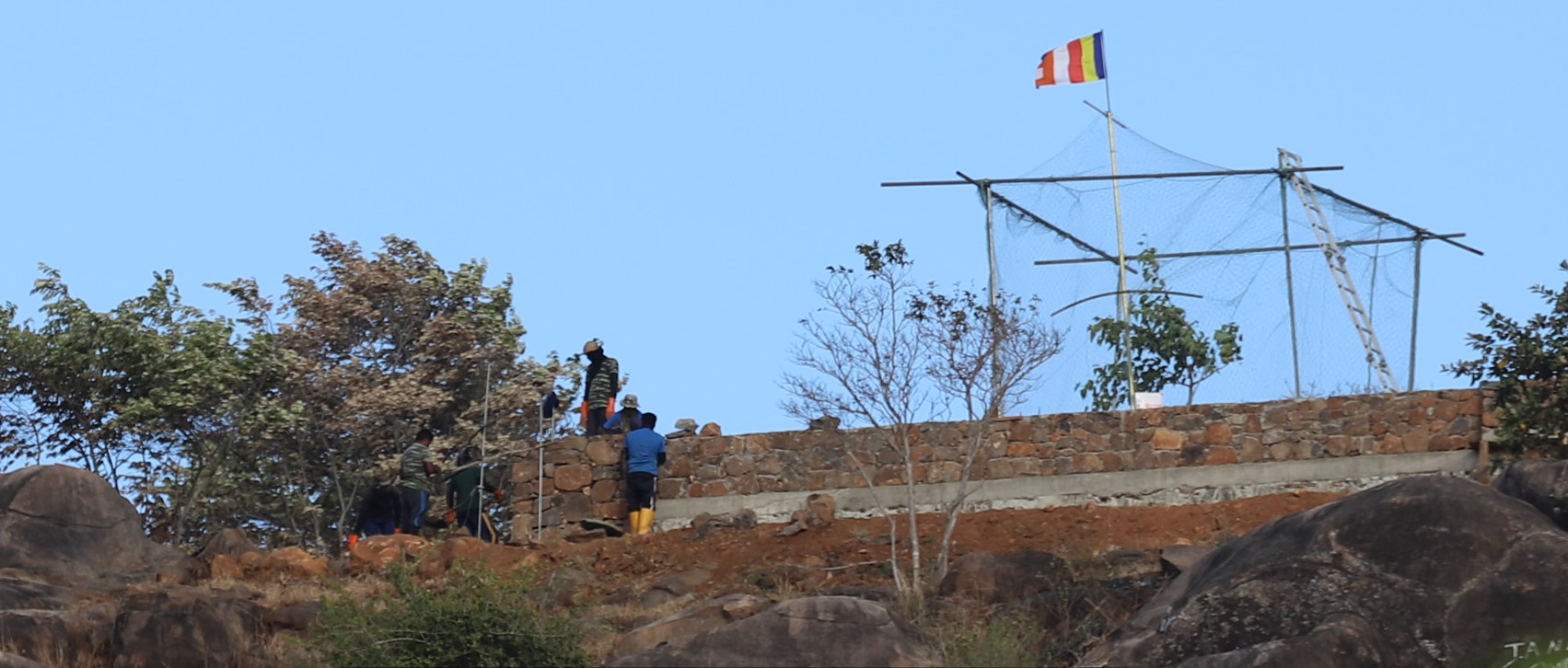
Sri Lanka’s Ministry of Defence dismissed rumours of a military withdrawal from temples and religious sites, asserting that troops stationed for 'security' would remain, as Buddhist shrines continue to be erected across the Tamil North-East.
The Ministry’s statement, led by Colonel Nalin Herath, clearly rejected social media claims suggesting a reduction in military presence.
It comes as Sinhala Buddhist sites continue to be erected across the North-East, in a push to colonise the Tamil homeland. Many of these sites have been built with the patronage or protection of the armed forces.
The statement dismissing military withdrawal illustrates the ongoing, deeply rooted militarisation in the North-East. This region is one of the most heavily militarised in the world; in Mullaitivu District for example. there is approximately one soldier for every two civilians.

Sri Lankan soldiers building a Buddhist shrine in Muttur in 2022.
Religious landmarks like the Maviddapuram Pillaiyar Kovil have also been targeted, with new Buddhist viharas and statues built on the temple grounds.
420 acres of Tamil land in Kumalamunai, which housed a historic Hindu temple, were ‘repurposed’ for the Kurunthur Malai Vihara project by the Department of Archaeology and military forces, although the court rulings were in support of the local Tamil population.
Read more from PEARL on Sinhalisation here.



